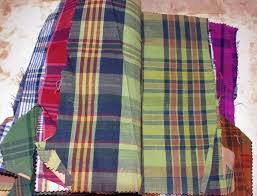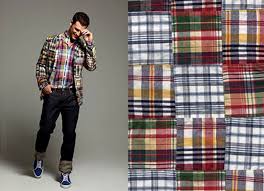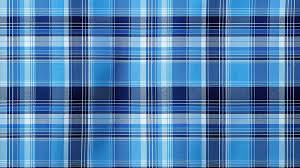Madras Plaid: A Vibrant Tapestry of History and Style
Madras plaid, with its vivid colors and distinctive checks, is more than just a pattern; it is a symbol of heritage, craftsmanship, and timeless fashion. Originating from the Indian city of Madras (now Chennai), this lightweight cotton fabric has traveled across the globe, making a significant impact on fashion and culture. Let’s explore the rich history, unique characteristics, and contemporary uses of Madras plaid.
The Origins of Madras Plaid
- Historical Background
- The history of Madras plaid dates back to the 17th century when the British East India Company began trading with the Indian subcontinent. The fabric was initially known for its unique dyeing technique, using natural dyes extracted from plants and roots indigenous to the region.
- Colonial Influence
- During British colonial rule, Madras plaid became popular among European settlers and was exported to various parts of the world. The lightweight, breathable fabric was particularly suited to tropical climates, making it a staple in colonial wardrobes.
- Cultural Significance
- In India, Madras plaid has always been more than just a fabric. It is deeply rooted in the culture and traditions of Tamil Nadu, where it was used for clothing, especially in rural areas. The distinctive checks and stripes reflect the region’s rich weaving heritage.
Characteristics of Madras Plaid

- Color and Pattern
- Madras plaid is renowned for its vibrant and varied color schemes. The patterns are typically made up of uneven checks and stripes, giving each piece a unique, handcrafted appearance. Traditional Madras plaid features a blend of colors like red, blue, yellow, and green, often in bold combinations.
- Fabric Quality
- Authentic Madras plaid is made from lightweight, breathable cotton. This makes it ideal for warm weather, as it allows for excellent air circulation and comfort. The fabric’s softness increases with each wash, enhancing its wearability over time.
- Handcrafted Techniques
- The traditional production process of Madras plaid involves hand-weaving and hand-dyeing, maintaining the artisanal quality of the fabric. Each piece is a testament to the skill and craftsmanship of the weavers, ensuring no two items are exactly alike.
Contemporary Uses of Madras Plaid
- Fashion
- Summer Wear: Madras plaid is synonymous with summer fashion. It is commonly used in shirts, dresses, shorts, and skirts, providing a bright, casual, and comfortable option for warm weather attire.
- Preppy Style: The preppy fashion movement in the United States during the mid-20th century popularized Madras plaid. It became a key element in preppy wardrobes, often seen in blazers, ties, and trousers.
- Runway Influence: High-fashion designers have also embraced Madras plaid, incorporating it into contemporary collections. Its bold patterns and colors add a touch of vibrancy and heritage to modern fashion pieces.
- Home Décor
- Madras plaid’s colorful and distinctive patterns make it a popular choice for home décor. It is used in items like curtains, tablecloths, bedspreads, and cushions, adding a lively and traditional touch to interiors.
- Accessories
- The versatility of Madras plaid extends to accessories such as bags, hats, and scarves. These items can provide a pop of color and pattern to any outfit, making them a favorite among fashion enthusiasts.
Styling Tips for Madras Plaid

- Mixing Patterns
- Madras plaid can be paired with other patterns for a bold and eclectic look. Mixing it with stripes, polka dots, or even florals can create a visually interesting and unique outfit.
- Neutral Pairings
- To let Madras plaid stand out, pair it with neutral colors like white, beige, or navy. This allows the vibrant checks and stripes to be the focal point of the ensemble.
- Layering
- Layering Madras plaid with solid colors can add depth and dimension to an outfit. For example, a Madras plaid shirt under a solid blazer or a Madras plaid skirt with a plain top can create a balanced and stylish look.
- Casual Chic
- Embrace the casual nature of Madras plaid by incorporating it into relaxed, everyday outfits. A Madras plaid shirt with jeans or shorts is perfect for a laid-back, yet stylish appearance.
The Enduring Appeal of Madras Plaid
Madras plaid continues to captivate fashion lovers and designers around the world. Its rich history, vibrant patterns, and lightweight fabric make it a perennial favorite, especially during the warmer months. As fashion trends come and go, Madras plaid remains a symbol of timeless style and cultural heritage.
In conclusion, Madras plaid is more than just a fabric; it is a vibrant tapestry that weaves together history, tradition, and contemporary fashion. Whether in clothing, accessories, or home décor, its bold colors and distinctive patterns continue to inspire and delight. Embrace the charm of Madras plaid and let its unique beauty transform your style and surroundings.




